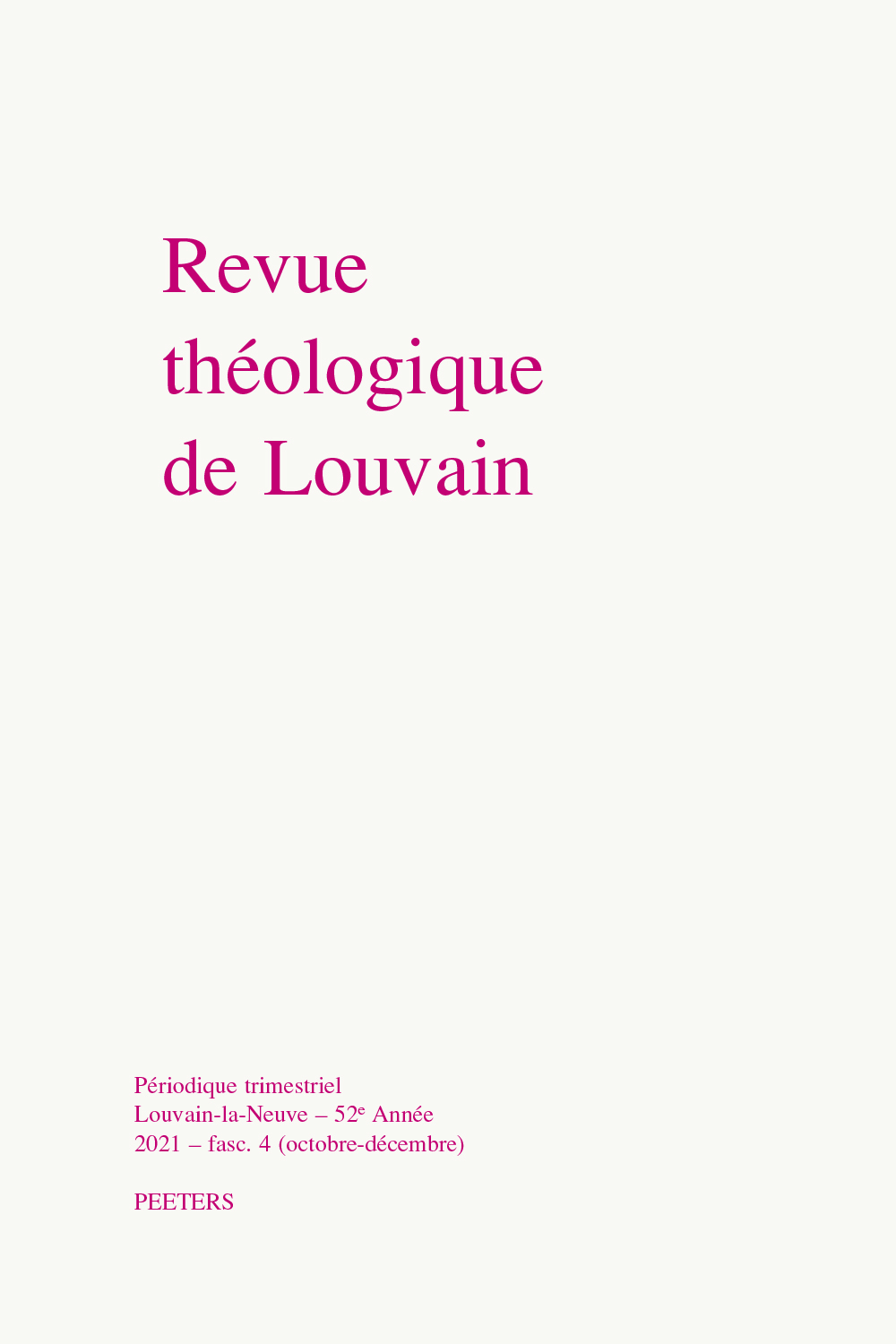 previous article in this issue previous article in this issue | next article in this issue  |

Preview first page |
Document Details : Title: Annoncer la vie éternelle Subtitle: L'interprétation de la Bible dans les textes officiels de l'Église catholique romaine Author(s): BIERINGER, R. Journal: Revue Théologique de Louvain Volume: 37 Issue: 4 Date: 2006 Pages: 489-512 DOI: 10.2143/RTL.37.4.2019293 Abstract : Les documents officiels de l’Eglise catholique font grand usage de la Bible. La manière dont le texte scripturaire fonctionne dans les documents du magistère dépend de la théologie opératoire sous-jacente. Cet article examine les changements survenus dans la manière dont l’Eglise comprend et utilise l’Ecriture dans les documents du magistère, plus précisément dans des textes concernant la doctrine sociale de l’Église. Des exemples choisis dans les documents officiels permettent de reconnaître en gros trois paradigmes dans l’interprétation de l’Ecriture: 1) la Bible comme recueil de propositions doctrinales; 2) la Bible comme archives des actions salvifiques de Dieu dans l’histoire: 3) la Bible comme vision d’une communion plénière avec Dieu et le prochain. Les deux derniers paradigmes se trouvent en germe dans le document Dei Verbum de Vatican II, tandis que le premier, qui avait été dominant dans les documents antérieurs à ce concile, a fait sa réapparition après la période de Vatican II. On montre que la compréhension de la Bible comme collection de propositions doctrinales accorde peu d’attention aux contextes historique et littéraire, tandis que les deux autres modèles s’y montrent plus sensibles, mettant l’accent sur la transformation et la communion plutôt que sur l’information. Official documents of the Roman Catholic Church make ample use of the Bible. The way the Scripture text functions in magisterial documents depends on the operative theology that underlies these texts. This paper investigates the changes that have occurred in the Church’s understanding and use of Scripture in Magisterial documents, more particularly in texts concerning the social teachings of the church. The study broadly classifies three paradigms of understanding Scripture, citing examples from official documents to illustrate their functioning: 1) the Bible as a collection of doctrinal propositions; 2) the Bible as a record of God’s saving actions in history; 3) the Bible as a vision of full communion with God and neighbour. The latter two paradigms are realised in nascent form in the Vatican II document Dei Verbum, while the former had been prevalent in pre-Vatican II documents and has reappeared after the Vatican II era. The understanding of the Bible as a collection of doctrinal propositions is shown to be relatively oblivious to the respective historical and literary contexts, whereas the other two models demonstrate increasing sensitivity to them by emphasizing transformation and communion as opposed to information. |
|


